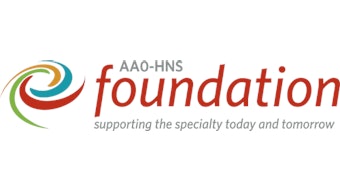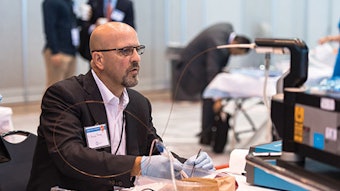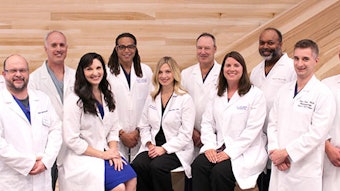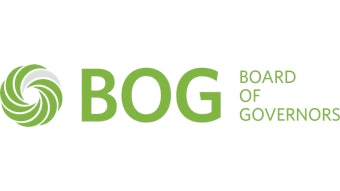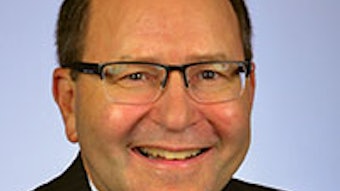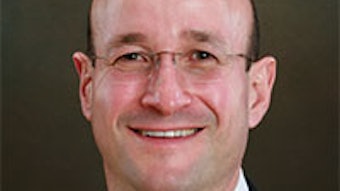Out of Committee: For the AAO-HNSF Medical Drugs and Devices Committee | Telemedicine in otolaryngology
Recently, many journals have been publishing articles promoting telemedicine. It has been hailed as a way to decrease healthcare costs, increase access to care, and improve patient experiences.
Manan Shah, MD, and John F. Kokesh, MD

One of the first subspecialties in otolaryngology to truly adopt telemedicine was otology, due to advances in otologic imaging. In Alaska, because of a lack of specialists in rural areas, John F. Kokesh, MD, and his colleagues established one of the first U.S. tele-otolaryngology clinics. They worked with audiologists and mid-level providers in remote villages to obtain patient histories, images of the tympanic membrane, and audiograms. This data was then transmitted to Anchorage for review and diagnosis by otolaryngologists. The telemedical otology visits provided by Dr. Kokesh and colleagues resulted in similar clinical outcomes, decreased wait times for specialty consults, and significant savings due to reduced travel costs.
These telemedicine visits resulted in improved productivity at the hospital level as well.1, 2, 3 Ultimately, facilities began using digital imaging for post-surgical follow-up of tympanostomy tubes and even used tele-consults for pre-operative planning for major ear surgery. With trained providers, tele-otoscopy images were shown to have similar diagnostic value to in-person pneumatic otoscopy.4, 5, 6 This model was further validated after Hurricane Katrina devastated Louisiana, when Moises A. Arriaga, MD, MBA, and colleagues used a similar system to provide remote neurotology care to patients in Baton Rouge, LA, from Pittsburgh, PA.7, 8
Due to the large catchment areas for certain Veteran’s Health Administration hospitals, telemedicine encounters by head and neck specialists, in conjunction with a local physician, have demonstrated savings for travel costs for surgical planning, counseling, and even head and neck cancer follow-up care.9 Other studies have supported telehealth’s role in head and neck cancer e-consults and post-op wound checks, laryngology consults, and even in providing ancillary services like speech therapy.10, 11, 12, 13
Initially, it might seem that telemedicine can only be used in academic centers or rural areas. However, a number of private practitioners are currently incorporating telemedicine into their practices as well. Some are employing the use of telemedicine for post-op wound checks for patients with a long commute; others are using the technology to add visual information for patient questions (e.g.,“Is this nosebleed bad enough that I should go to the ER?”) or for medication management or counseling. Depending on the service used, patients can connect with their physicians via their laptop or their phone.
Telemedicine reimbursement is still at its nascent stages with most payers. As a result of reimbursement challenges, many physicians currently offer telemedicine as a cash-only service. Additionally, while most malpractice insurers cover telemedicine, providers should confirm that their respective insurer covers them in the states where the patients are served. Practitioners should also check their state medical board regulations before beginning to offer telemedicine services.
Currently, telemedicine has been shown to be effective and reliable for specific case types in otolaryngology. For large health systems, it can create cost savings, and for patients, it can offer easier access or convenience. While a virtual visit will never replace a hands-on physical exam, as patients become increasingly comfortable with telemedicine, there will likely be increased adoption by otolaryngologists.
References:
- Kokesh J, Ferguson AS, Patricoski C, et al. Traveling an audiologist to provide otolaryngology care using store-and-forward telemedicine. Telemed J E Health. 2009 Oct;15(8):758-63.
- Hofstetter PJ, Kokesh J, Ferguson AS, et al. The impact of telehealth on wait time for ENT specialty care. Telemed J E Health. 2010 Jun;16(5):551-6.
- Kokesh J, Ferguson AS, Patricoski C.Telehealth in Alaska: delivery of health care services from a specialist’s perspective. Int J Circumpolar Health. 2004 Dec;63(4):387-400.
- Kokesh J, Ferguson AS, Patricoski C, et al. Digital images for postsurgical follow-up of tympanostomy tubes in remote Alaska. Otolaryngol Head Neck Surg. 2008 Jul;139(1):87-93.
- Kokesh J, Ferguson AS, Patricoski C. Preoperative planning for ear surgery using store-and-forward telemedicine. Otolaryngol Head Neck Surg. 2010 Aug;143(2):253-7.
- Patricoski C, Kokesh J, Ferguson AS, et al. A comparison of in-person examination and video otoscope imaging for tympanostomy tube follow-up. Telemed J E Health. 2003 Winter;9(4):331-44.
- Arriaga M, Nuss D, Arriaga RY. Neurotology telemedicine consultation. Otolaryngol Clin North Am. 2011 Dec;44(6):1235-50, vii.
- Arriaga MA, Nuss D, Scrantz K, et al.Telemedicine-assisted neurotology in post-Katrina Southeast Louisiana. Otol Neurotol. 2010 Apr;31(3):524-7.
- Beswick DM, Vashi A, Song Y, et al.Consultation via telemedicine and access to operative care for patients with head and neck cancer in a Veterans Health Administration population. Head Neck. 2016 Jun;38(6):925-9.
- Rimmer RA, Christopher V, Falck A, et al. Telemedicine in otolaryngology outpatient setting-single Center Head and Neck Surgery experience. Laryngoscope. 2018 Feb 15. [Epub ahead of print]
- Kohlert S, Murphy P, Tse D, et al. Improving access to otolaryngology-head and neck surgery expert advice through eConsultations. Laryngoscope. 2018 Feb;128(2):350-355.
- Bryson PC, Benninger MS, Band J, et al. Telemedicine in laryngology: Remote evaluation of voice disorders-setup and initial experience. Laryngoscope. 2018 Apr;128(4):941-943.
- Ward EC, Wall LR, Burns CL, et al. Application of telepractice for head and neck cancer management: a review of speech language pathology service models. Curr Opin Otolaryngol Head Neck Surg. 2017 Jun;25(3):169-174.
- Yulzari R, Bretler S, Avraham Y, et al.Mobile Technology-Based Real-Time Teleotolaryngology Care Facilitated by a Nonotolaryngologist Physician in an Adult Population. Ann Otol Rhinol Laryngol. 2018 Jan;127(1):46-50.
- Seim NB, Philips RHW, Matrka LA, et al. Developing a synchronous otolaryngology telemedicine Clinic: Prospective study to assess fidelity and diagnostic concordance. Laryngoscope. 2017 Oct 27. doi: 10.1002/lary.26929. [Epub ahead of print]
- McCool RR, Davies L. Where Does Telemedicine Fit into Otolaryngology? An Assessment of Telemedicine Eligibility among Otolaryngology Diagnoses. Otolaryngol Head Neck Surg. 2018 Apr;158(4):641-644.
- Shah MU, Sohal M, Valdez T, et al. iPhone otoscopes: Currently available, but reliable for tele-otoscopy in the hands of parents? Int J Pediatr Otorhinolaryngol. 2018 Mar;106:59-63.
